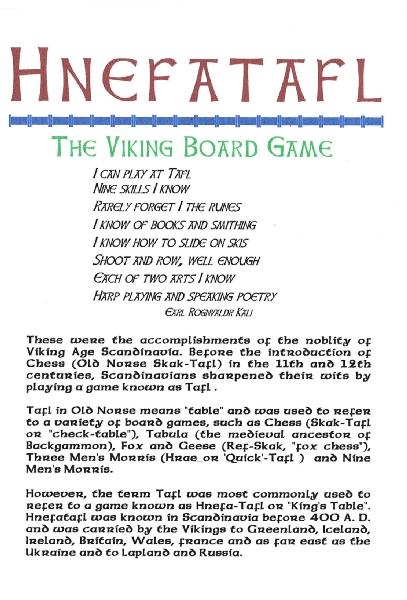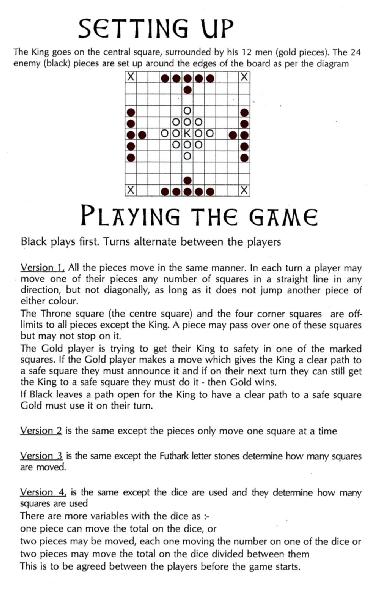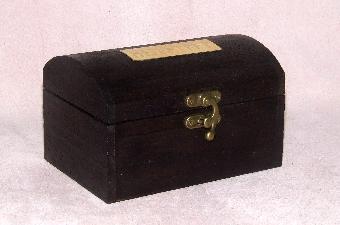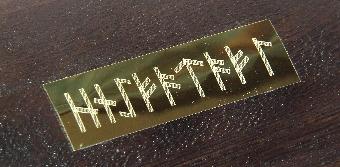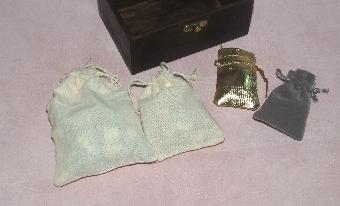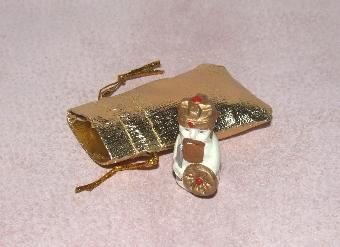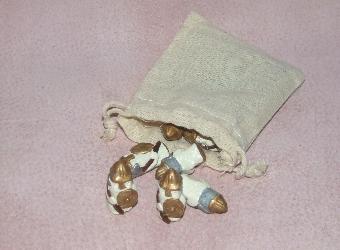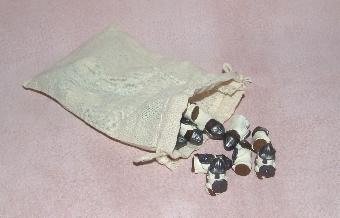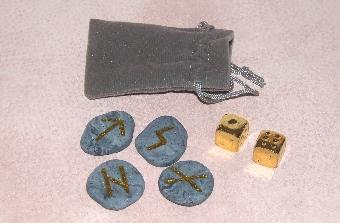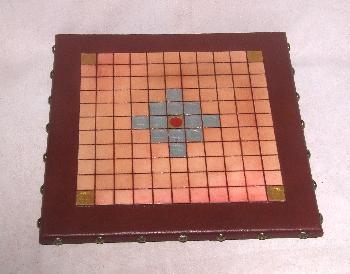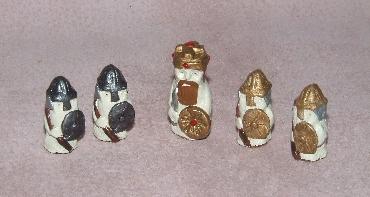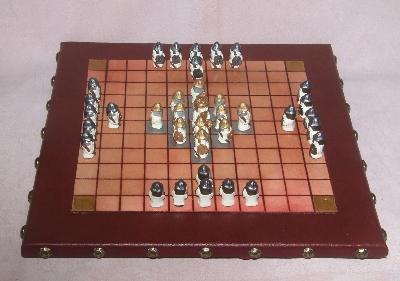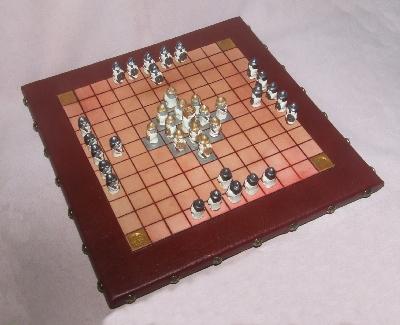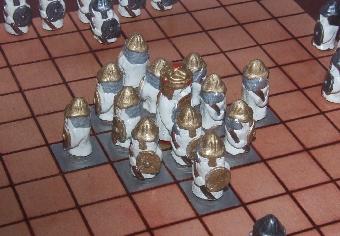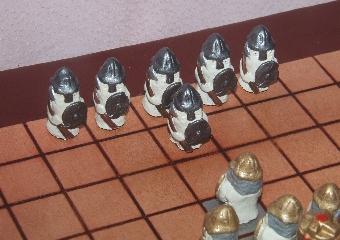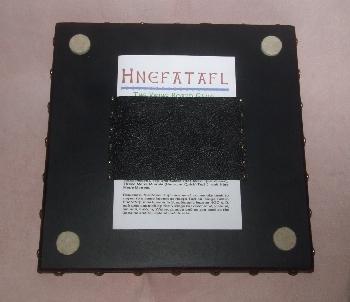-
Posts
5,931 -
Joined
Content Type
Profiles
Forums
Events
Blogs
Gallery
Everything posted by fredk
-
My main hat looks like the one in your first picture but I want to make one like your second picture I bought a pattern from dieselpunk for an 'Indiana Jones Style' hat a few years ago
-
Looking for a dead-blow mallet I came across a place not too far from no.1 son's work place selling a 1lb, a 2lb and a 3lb dead-blow mallets for £14.99 delivered. Thats £14.99 for all three. Or I can buy a 2lb one for £8.85 mmm, choices, choices . . . .
-
I've been following this. I reckon I need a heavier maul. I don't as yet do any real decorative stamping. I have an old wood working mallet. Total weight is 16oz. I have a HDPE mallet, total weight is 11.5oz, head only is 9.5oz Do you think a rubber 1.5lb dead-blow mallet would do? I can no longer swing anything much heavier than that oh man, that is so real nice looking. May you have the joy of lots of happy hours using it yeah, they don't like it or understand it. . . . . until they need something fixed and they expect you to have the fixings,
-

Using a Vacuum Bag . . .
fredk replied to Dwight's topic in Gun Holsters, Rifle Slings and Knife Sheathes
Check this one out; https://www.amazon.co.uk/Vacuum-Valve-Bagging-Composites/dp/B01DL7NGBI -

A better quality hand splitter/skiver for soft leather
fredk replied to DrmCa's topic in Leather Tools
Be prepared for changing the blade often. I find soft leather, especially my chrome tan stuff blunts the blade very quickly. Much more quickly than any veg tan I have -
The nfo doesn't help with the gloss. It helps the wax mix be absorbed into the leather. Without the nfo the wax mix just sits on the top layer of the leather. The carnauba wax gives the shine but its a really hard wax so its mixed with the softer beeswax to make it workable
-

When using a vacuum bag to form a holster how many HP do you use?
fredk replied to AzShooter's topic in How Do I Do That?
My place is between 35 and 50ft below Atlantic Mean Sea Level. (ie the other side of the island of Ireland) There are large whirlpools at the North end where the Irish Sea becomes the North Channel and meets the Atlantic. The whirlpools are those of legend, big enough to take a small ship to doom. At the South end of the Irish sea where its wider the tides are stronger as the sea tries to level it self. We have several small airfields and a small airport nearby and pilots are astonished that they have to set their altimeter for minus 35 or 50 feet Sorry for off-topic. Just answering -

When using a vacuum bag to form a holster how many HP do you use?
fredk replied to AzShooter's topic in How Do I Do That?
My place is 29ft above Irish Sea Level, or about 10 ft above Mean Sea Level of the British Isles. I was told many years ago that mean air pressure here is about 15.1 lb -
Waaay too expensive and too much work there Dwight I have a microwave oven which is also a grill and convection oven. I put the waxes into a wee ceramic pot (bought for about 20p /25c at a charity/thrift shop) and that into the oven at 100* for 1 hour. The waxes melt together in that time. I lift out of the oven and just set it aside to harden in that pot. I use it from the pot
-
afair, the chaps were in use by South American cattle drovers first, then the idea worked north into Mexico and then spread through the US cattle states. Early on 100% of cattle drovers were Mexican or mixed-birth, then by about 1860s about 10% were white Caucasians, Mexicans and mixed-birth still dominated the cattle droving. After the War-between-the-States (aka the US Civil War) more European types moved into that employment but afair it never got above 20 to 25%. But the demand for cattle had grown so much that that 20% was still several thousand men.
-
As instructed to me by a Finnish archaeologist; The H is nearly silent, you start with a breath like you are about to sneeze then naV, then a short E sound, then tev-l
-
Not something I've paid much attention too but over on a plastic model making website there are some people who use their Cricut to make self-adhesive masks for covering model parts for spray painting. afaik they draw the masks up in their computer
-
Its really no more complicated than chess. Sort-of a cross between chess and chequers
-
These are (imperfect) scans of my instruction booklet. Sometimes you've just got to stop and play one variation of this game as there are literally thousands of variations of the rules, all claiming to be the one true way to play Cover Page 2 Page 3 Page 4, back cover I print these 2-page on both sides of A4 170gsm light card. When trimmed and folded it makes a nice A5 (approx 8 inch x 5 inch) booklet
-
Maybe, we'll see I haven't a clue what the rules we play by are called. We have about 4 variations which we play by We usually just take the piece off and leave the square empty
-
Thanks for the compliments. They are appreciated He hasn't seen it yet! He might get it tomorrow, (29th)
-
Yes, it needs lots of waxing, every few inches sometimes. As you pull the thread thru a hole the leather is scraping off some of that wax. Put the thread on top of a block of soft-ish bees wax. put your thumb on the thread and press the thread into the wax, then pull the thread thru the wax still with your thumb pressing it onto the wax. The thread will cut a groove in the wax and get a good coating. But you need to do this several times as you sew
-
Looks like you're not waxing your thread. Wax it as you sew. You can never pull stitches up real tight on chrome tan, its too soft Sharpen and polish the teeth of your stitching chisel
-
I made this Hnefatafl game for #1 son for a Christmas present. I'm making a similar set for #1 dottir I bought-in the wood box. It was plain white wood so I stained and varnished it I get a lot of engraved plaques made by a certain engraver. He worked out how-to and made me about 22 of an engraved gold aluminium plaque for the top of the box Inside the box are four bags The gold bag holds the King The small linen bag holds the King's men The large linen bag holds the Opponent's men And the grey bag holds two brass dice and 4 rune stones The game board is 30cm -1ft square. The playing area is about 23cm - 9 inches square. Each square is 2cm - 3/4 inch. In my version the playing area is 11 x 11 squares The board is covered in coloured chrome tan leather, about 1.2mm thick, and the playing area is veg tan, about 1.6mm thick, and is glued on top of the chrome tan with contact adhesive. The centre and corner squares are stamped before it goes on but the lines are gouged after its on. 3 or 4 coats of 'Astonish' (like Mop n Glo) for sealing the playing area and then a tan 'antique' rubbed on into the lines. The 'antique' doesn't actually stain the squares but it does leave a tint to them just in the varnish sealer, I can clean this off if I want to but I liked the toning down the tint gave The game pieces close up. I first carved these about 20 years ago. I carved a few originals in polymer clay (aka Fimo or Sculpey) then I made rubber moulds of them. Every so often I have to make new moulds. After one of my first casting sessions I had a few mis-shaped men but I took moulds of them and add them into the sets so that not all the men are identical, like factory made. I cast them in a special plaster called Keramin. Then hand paint them. Other sets are just plain ivory and plain brown. But this set is special. The soldiers are about 1 inch tall. 36 soldiers and one King are need in my game, King and 12 soldiers and 24 Opponents. In each set I add in a couple of each colour for spares The game set up for play The King goes on the centre square surrounded by his army And the opponents are arranged along the middle of each side What I've not photographed, because its boring, is the 4 page instruction booklet that goes with each set Edit; I forgot to photo the underside of the board. A piece of thin stiff pigskin lining leather, glued and pinned on to hold the instruction booklet
-

Happy Leathercrafting Christmas 2021
fredk replied to Handstitched's topic in Leatherwork Conversation
Happy Christ-mass to everyone ah, Heat, I think I remember that. Its about 2* C here and a storm blowing which makes it feel colder and heavy lashing rain. No relief until June '22 -
I think you know the answer. You've already set out your points. Put the ties on first, then the lining. Can you put the ties on without the conchos? then after the lining is on tie up the conchos
-
Here's an idea, I used this method 1. cut the pieces over wide, on each side which is to be sewn 2. on the inside, draw a line for the actual width, where the excess will be cut off 3. cut just outside of the actual size line and bevel the edge, trimming back to the actual size line 4. mark your stitch spacing on the bevel 5. use a round scratch awl to poke holes at your stitching points, in the centre of the bevel but angle the scratch awl so that it is at a right angle to the bevel surface It should come out on the grain side/outside of the piece about 2mm (= half the thickness of your leather) further in, or further in if you desire 6. After doing #3 on the next piece I put it up against the other piece to mark the stitch spacing, to get them the same. I use a pen to mark the two edges to go together, eg, A & A, B & B etc. I mark this on the bevelled surface so its hidden when all is glued up 7. When I glue up the edges I slide a straightened paper clip into and through a couple of sets of holes to keep it all aligned 8. with the holes premade I use a curved sewing awl to open up the holes and curved saddlers harness needles for the sewing
-
excellent may you have the joy of applying your new brand to many nice items
-
What was used in 1900 and what can be used now I think you could use one of these types of creaser Which leaves a bead/raised curved edge But used internally and in two opposing runs will give you a valley with a raised bead on each side



